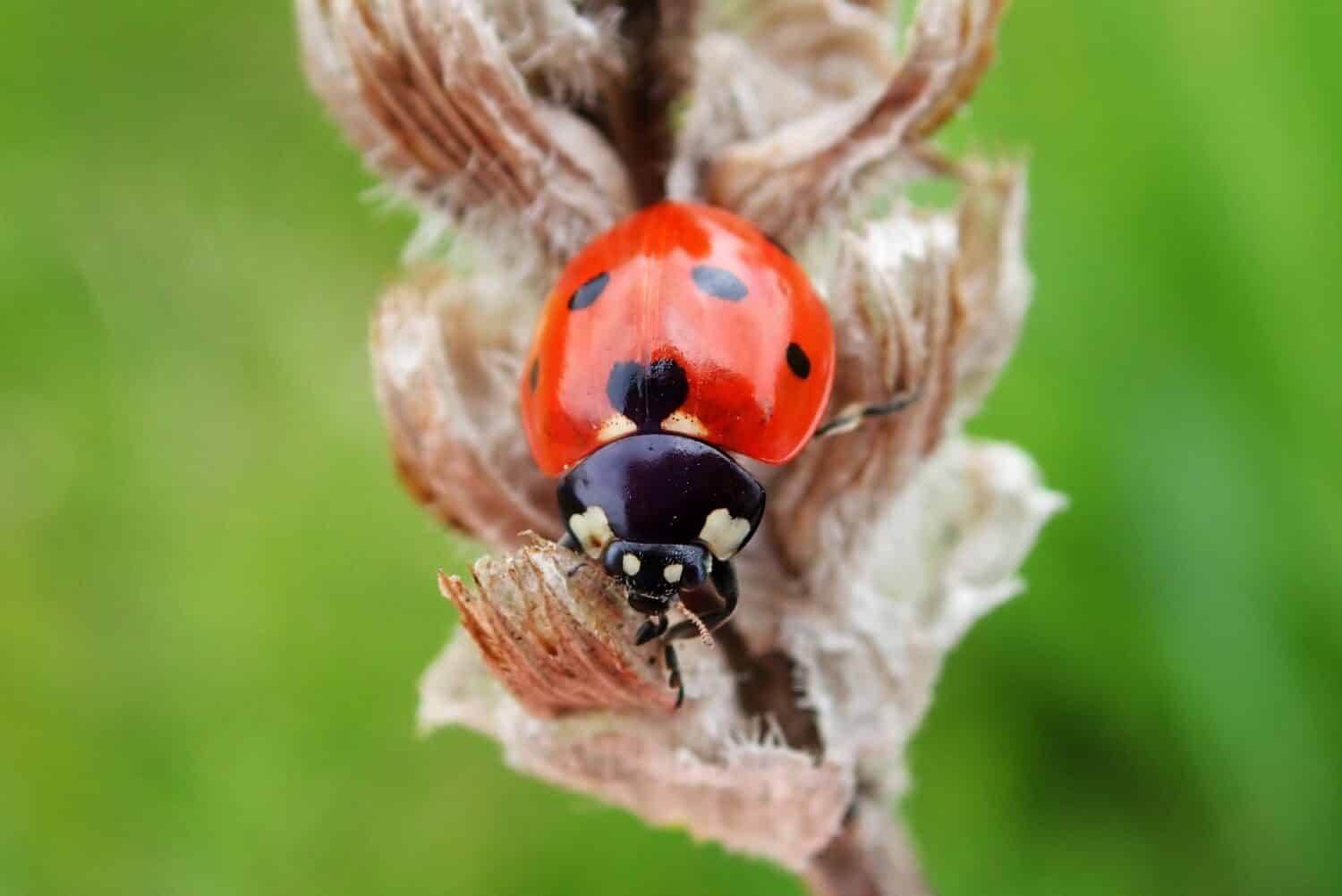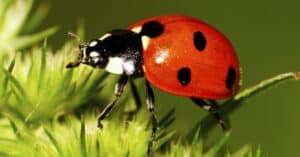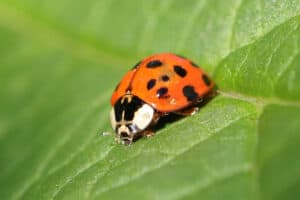Introduction
Because of their propensity to consume the pests that ruin our crops, ladybugs, also referred to as ladybirds and, less frequently, lady beetles, are arguably among the only bugs that humans don’t actively despise.
How, though, did this tiny insect get labeled with such a unique moniker? To begin, while a lot of the Coccinellidae family are commonly referred to as “ladybugs” in certain U.S. locations, they aren’t actually recognized to be true bugs. It would be more appropriate to call them beetles.
The name ladybug and ladybird don’t make a lot of sense in this case because of how evident these names’ etymologies are. What is less evident is the meaning behind the term “lady” in the name of these tiny, ravenous beetles.
The truth is, the ladybug’s name doesn’t refer to any particular feminine characteristics that it may have. Instead, it bears the name of a particular woman that most know as the Virgin Mary.
One of the most popular ideas holds that the name was inspired by the ladybug’s vivid red exterior, which is comparable to the scarlet shroud Mary is sometimes depicted donning in biblical artwork.
Another old European tradition claims that farmers prayed to the Virgin Mary several centuries ago for assistance in preventing diseases from consuming their produce, and in gratitude, she sent a mass of small beetles sporting her signature garment to devour them.
Recognizing Variants: The Ladybug Spectrum – Identifying Different Species and Their Unique Characteristics
With over 5,000 types of ladybugs on the planet, it’s nearly impossible for us to cover them all. But, what are some of the most well-known species? How can you identify one from the other?
Nine-Spotted Ladybug

There are both seven and nine-spotted ladybugs.
©Vojce/Shutterstock.com
In North America, the Nine-spotted Lady Beetle is a native species. It was once a widespread species in the northeastern United States, but it is now rare. The wing flaps of this species feature four black dots, including one that is divided between the two wings.
Additionally black is the suture that connects the wing coverings. This type of ladybug is most likely seen from May through September. Fun fact: the state insect of New York is the Nine-spotted Lady Beetle.
Convergent Ladybug
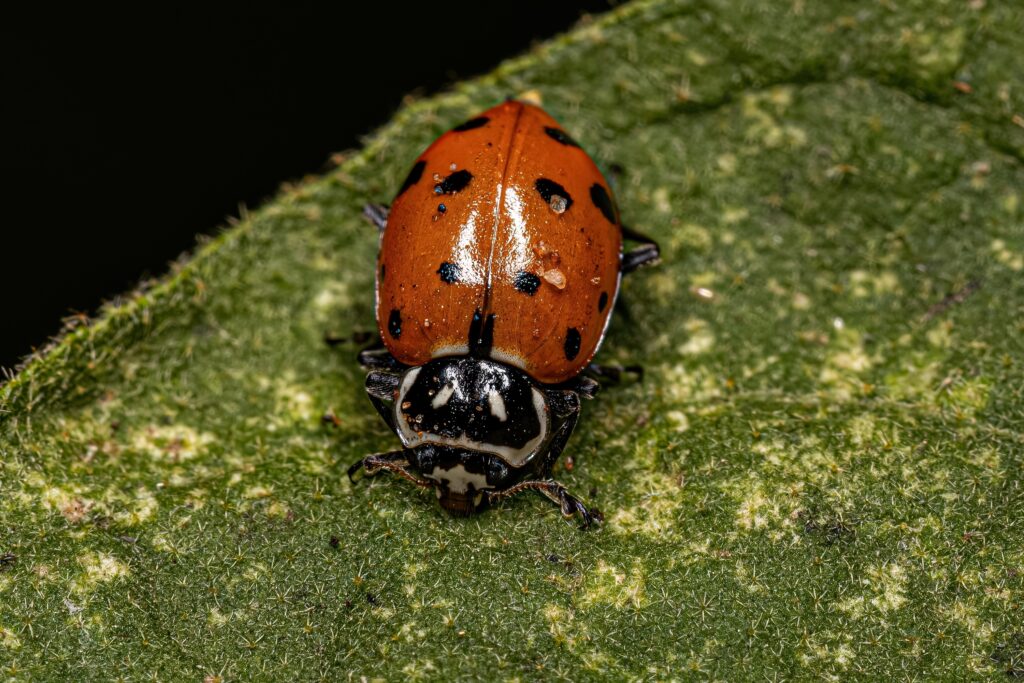
This is one of the most common species in the United States.
©Vinicius R. Souza/Shutterstock.com
If you’ve ever spotted a ladybug outdoors, or perhaps even inside, it was likely a convergent ladybug. For mature ladybugs of this species, the wing covers typically contain 13 black dots and are more orange than red in color.
Certain beetles either have a smaller number of spots or none at all. In nearly every location where plants are affected by an aphid infestation, the convergent lady beetle can be observed. Adults can fly well and easily move between different plants and places.
Multicolored Asian Ladybug
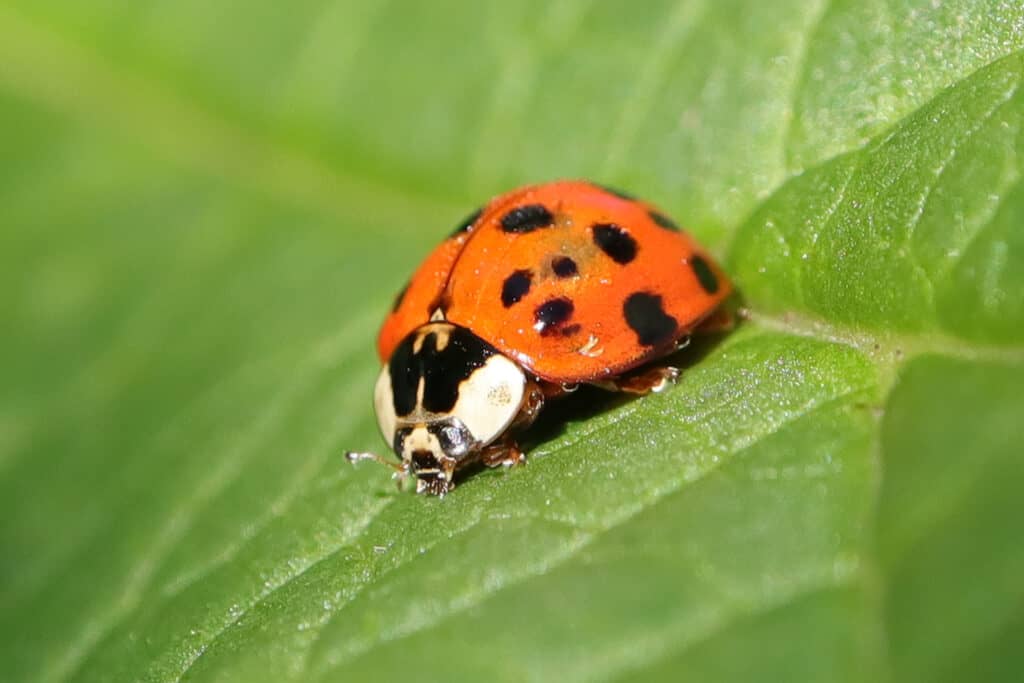
Asian lady beetles are often orange in color.
©iStock.com/DE1967
The multicolored Asian lady beetle resembles similar ladybugs in appearance, but it is larger, measuring approximately 1/3 inch long. It can be observed in a variety of hues, including orange, yellow, red, and occasionally even black.
This beetle normally has 19 black spots on the wing covers, that can range in clarity from easily identifiable to barely perceptible indications. In order to correctly recognize the multicolored Asian lady beetles, check for the apparent black ‘M’-shaped pattern below its head.
When they are present in high quantities inside homes, they can be quite annoying for homeowners.
Winton’s Ladybird Beetle
The Winton’s ladybird beetle was very recently found in Montana in 2009. This is among the rarest of the species in the country, and only a few instances of it have been seen in Montana and Idaho.
You can scarcely find a picture of this little insect because the probability of someone encountering it is so slim. Their appearance is brown and has no pattern. This creature’s ability to completely curl its head into its neck to resemble a turtle is its most distinctive characteristic.
Pest Potential: Understanding the Role of Ladybugs as Pests
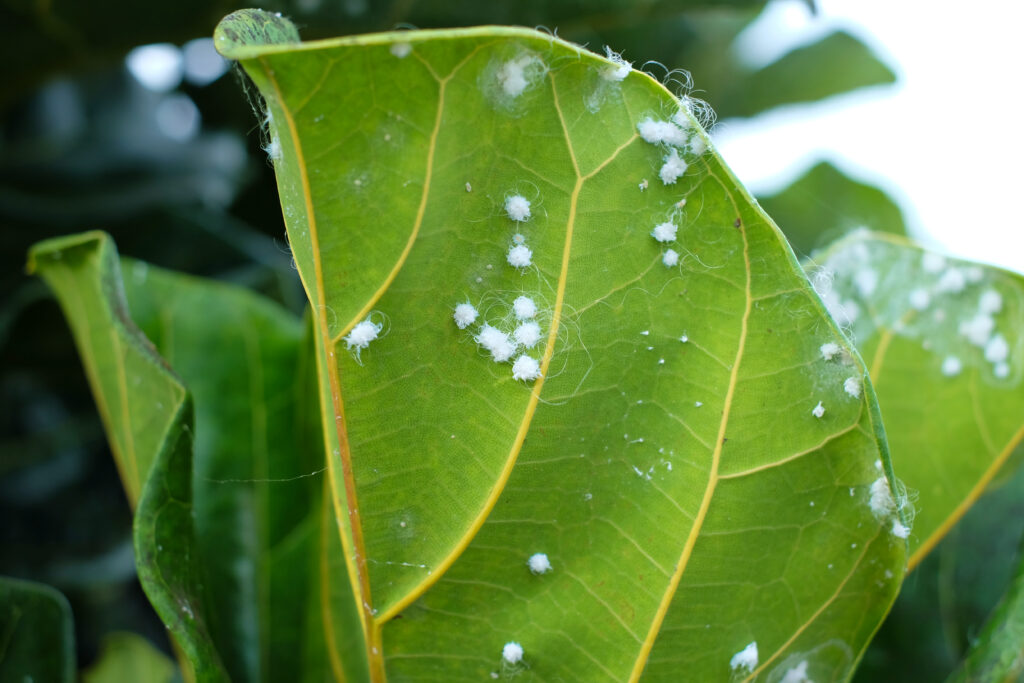
Ladybugs will devour wooly aphids like these.
©daguimagery/Shutterstock.com
In a garden, the presence of ladybugs can indicate fewer pest issues, especially terrible aphids. Aphids eat off plant tissues and can infect plants with viruses, yet an adult ladybug is capable of eating hundreds of aphids per day and countless over the course of its life.
They also consume other pests that harm your garden, like white flies, scales, and mites. These pests can all have a harmful impact on garden plants, especially vegetables. Encourage ladybugs to live in the yard to reduce their workload and eliminate the need for potentially harmful insecticides.
Lady beetles consume aphids and other insects, but they also look for pollen for their nourishment. Ladybugs will come to your landscaping if you cultivate flowers and herbs that produce a lot of pollen.
Removal Techniques: Efficient and Humane Techniques for Ladybug Removal
Lady beetles are excellent garden defenders because they quickly consume damaging plant pests like aphids. But when it gets cold, they look for a comfortable place to hibernate, which is frequently a house.
If you don’t get rid of ladybugs right once and clean up the pheromone trails they leave back, you’ll have an invasion very quickly. Even if ladybugs do not seriously endanger the property’s health or framework, you nevertheless want to prevent them from settling there indoors.
Here are the best strategies for preventing a ladybug infestation in a humane way and becoming ready in case one occurs.
Sweep Them Up
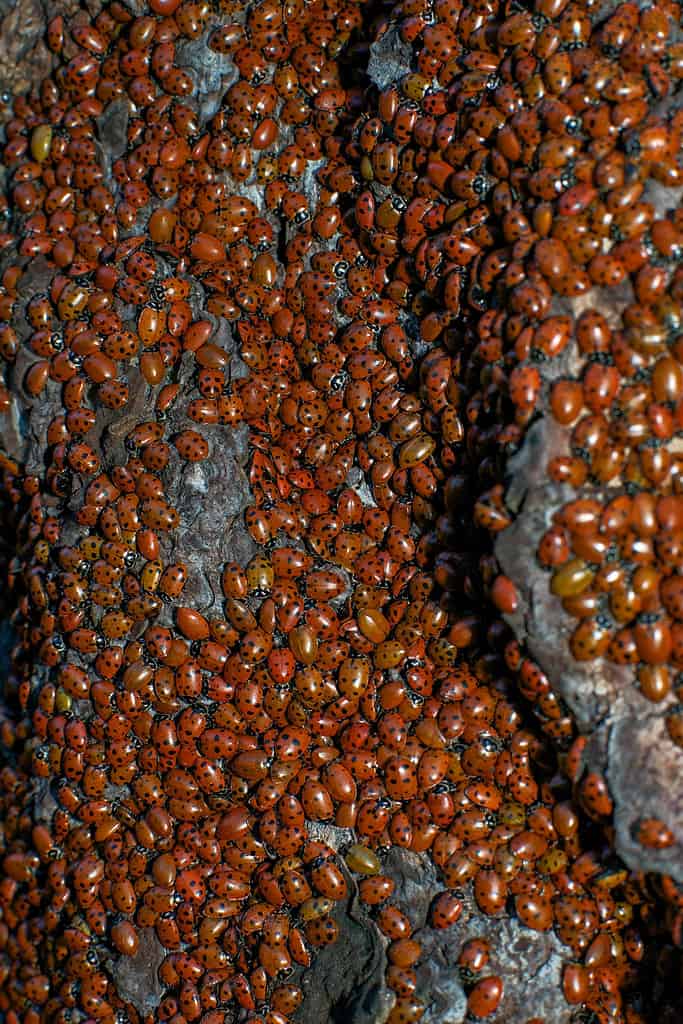
Ladybugs gather in massive swarms during the winter.
©iStock.com/AlessandraRC
One of the simplest ways to eradicate a colony of ladybugs is to just gather them up with a broom and dustpan. You can sweep up a sizable swarm of ladybugs and place them outdoors.
If the infestation has not spread too far, physically moving the colony will deter others from entering. After getting rid of them, clean the location with soap to get rid of any chemical traces that were left behind to draw in further bugs.
Light Traps
Use common kitchen materials to create a light trap that is friendly to ladybugs at home. To make a funnel, split a plastic drink bottle in half, then drop its upper half into the bottom half. While leaving space for the ladybugs to get into the bottle’s bottom, insert an LED light inside the funnel.
Beetles will swarm to the light but become trapped in the trap before being let out outside.
Natural Repellents

Lavender essential oil is a great way to deter these critters.
©iStock.com/Olivka888
A variety of herbs and essential oils can also prevent ladybugs from congregating or from even getting into your house. If these goods are in an area where kids and pets can easily access them, be sure to verify their safety for both.
Some scents these critters dislike are:
- Citronella
- Clove
- Lavender
- Lemon
- Orange
- Bay leaves
Use a couple of drops of essential oils diluted in a carrier oil, spray bottle, or your own homemade cleaning products to spray on bug-infested regions. Even the greatest oil diffusers can prove successful at keeping ladybugs away from the area.
Conclusion: The Importance of These Insects in Our Ecosystem
Since ladybugs are intrinsic predators of the bugs that humans view as pests and which are challenging for crops to flourish, they play a significant role in the food chain. Ladybugs are efficient pest control in agriculture and gardening.
If you have a lot of ladybugs in your yard or crop field, it probably signifies that you don’t need a lot of pesticides. By evolutionary change, ladybugs evolved to adapt by shrinking to the typical size we are familiar with today.
This indicates that the ratio of predator populations to the amount of available food has been restored. As a result, we are aware that, like numerous species, shifts in the ecosystem’s balance have an impact on the number of ladybugs and how they evolve.
Luckily, at the time of writing this, ladybugs are thriving. Worldwide, there are about 5,000 different species of ladybug. Nevertheless, as a result of human activity and changing environmental conditions, several of these species are either on the verge of extinction or are in danger.
To do your part, make sure to plant flowers and vegetation that attract and feed these beautiful creatures.
Thank you for reading! Have some feedback for us? Contact the AZ Animals editorial team.

